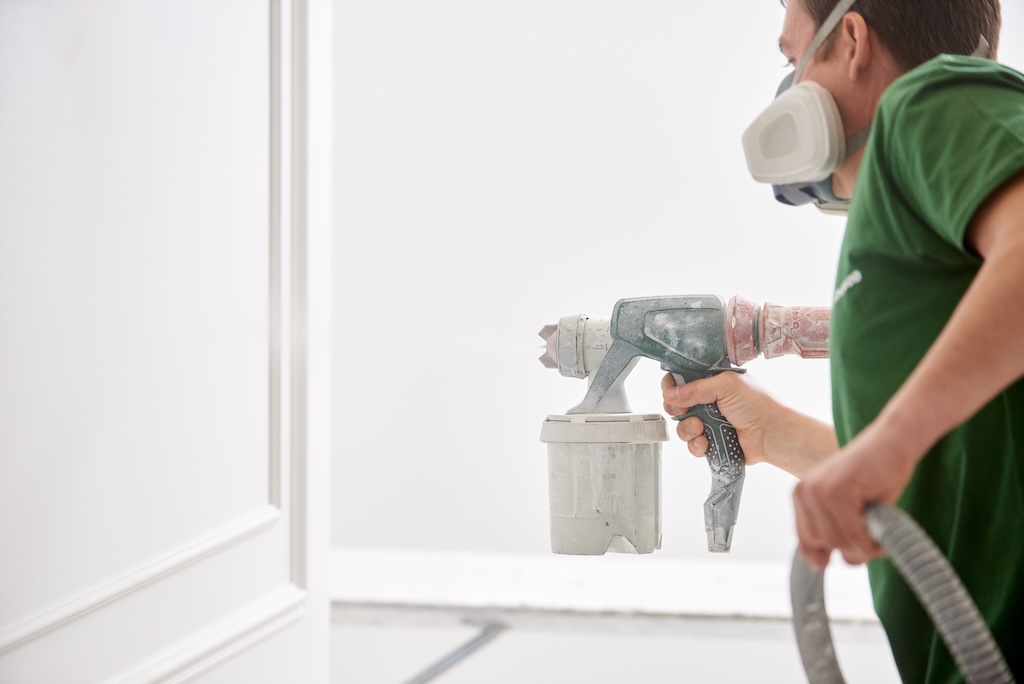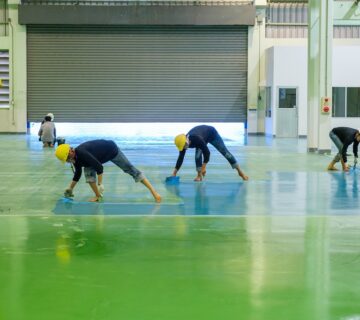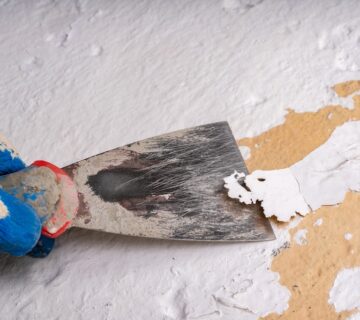Engaging in a house painting project can be an exciting venture, whether it’s a DIY endeavor or a professional undertaking. However, it’s crucial to acknowledge the safety aspects involved in painting, especially considering the various chemicals and physical activities it entails. The importance of using protective gear cannot be overstated, as it safeguards against potential hazards and ensures a safe painting experience. This blog discusses essential protective gear for house painting and their roles in ensuring your safety.
Respiratory Protection
Paints, especially those that contain volatile organic compounds (VOCs), release fumes that can be harmful when inhaled. The risk is heightened in poorly ventilated spaces. Wearing a mask or a respirator is crucial for respiratory protection. For simple tasks involving less toxic paint, disposable masks may suffice. However, for more heavy-duty work or when using paints with high VOC content, a high-quality respirator with appropriate filters is essential. It filters out harmful particles, providing clean air to breathe and protecting your respiratory health. Additionally, ensure that the respirator fits properly to prevent any gaps where contaminants could enter.
Eye Protection
Painting often involves activities that can pose a risk to your eyes, such as sanding, spraying, or even rolling paint on ceilings. Safety goggles or glasses are indispensable to prevent paint splatters, dust, and debris from entering your eyes. Look for goggles that fit snugly and provide a seal around your eyes. They should also be compatible with respirators if both are to be worn simultaneously. Consider investing in goggles with anti-fog coating to maintain visibility during humid conditions.
Protective Clothing
Paint can easily splatter and spill, and some of its components can be harmful to the skin. Long-sleeved shirts and long pants made of thick material can protect your skin from paint exposure. Additionally, coveralls or painter’s suits are specifically designed for painting jobs. They cover your regular clothes and provide an extra layer of protection. Some suits come with hoods to protect your head and hair as well. Choose clothing that allows for freedom of movement without being too loose or restrictive.
Gloves
Hands are directly exposed to paint and cleaning agents, making gloves an essential piece of protective gear. Disposable gloves can protect your skin from direct contact with paint, especially when handling oil-based paints, which are harder to wash off. For more intensive jobs, you might need durable gloves, especially when working with solvents and other cleaning agents. Consider gloves with textured palms for better grip and dexterity.
Footwear
Proper footwear is crucial for safety, especially when working on ladders or uneven surfaces. Shoes with non-slip soles are ideal to prevent slips and falls. They should also be comfortable, especially for projects that require long hours of standing. Steel-toed boots offer additional protection against heavy objects and potential hazards on the work site. Ensure that your footwear is in good condition and provides adequate support for your feet and ankles.
Ear Protection
For projects that involve power tools for sanding or removing old paint, ear protection is necessary. Prolonged exposure to loud noise from these tools can damage your hearing. Earplugs or earmuffs can provide adequate protection and are essential for maintaining long-term ear health. Choose ear protection that fits comfortably and does not cause discomfort when worn for extended periods. Additionally, consider noise-canceling earmuffs for maximum protection in noisy environments.
Safety Harnesses
For exterior painting projects that involve heights, safety harnesses are crucial. They provide support and prevent falls when working on ladders, scaffolds, or roofs. Ensure that the harness fits well and is attached securely to a stable anchor point. Regularly inspect the harness for any signs of wear or damage and replace it if necessary. Proper training in the use of safety harnesses is essential to ensure their effectiveness in preventing falls.
Final Thoughts
Protective gear plays a vital role in ensuring safety during house painting projects. From respiratory masks to safety harnesses, each piece of equipment is designed to protect you from specific risks associated with painting. Investing in and correctly using these safety gears not only ensures a safer painting experience but also contributes to the overall success of your project. Remember, safety should always be your top priority. By prioritizing safety and using the appropriate protective gear, you can enjoy a rewarding and hazard-free painting experience. For more tips on safe painting practices, visit our website at sisupainting.com and explore our blog at sisupainting.com/blog.





No comment